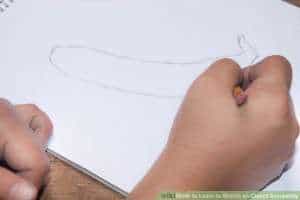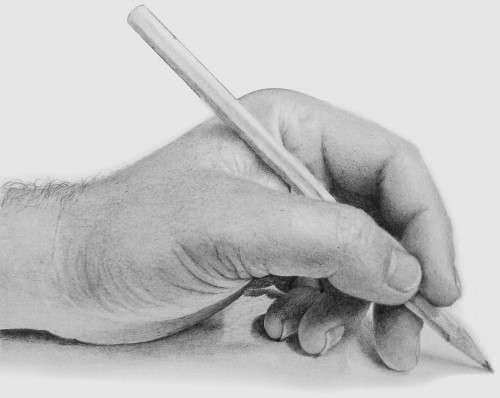BBC Broadcaster, Andrew Marr explains why we should all rediscover the simple joys of putting pencil on paper.
Why would anyone in their right mind seek to encourage other people, strangers with lives of their own to live, to draw? Why should there even be a ‘Campaign for Drawing’? We don’t need campaigns, apparently, to persuade others to write, or take photographs, or play music. What’s special about drawing? I think the answer is that it is an important part of being fully human which has, for very specific reasons, fallen out of practice and habit.
Most educated people understand that to survive in the modern world they need to be able to write, to explain themselves, as well as to read. Generations have grown up sending photographic images to others, once by snail mail and now by Instagram. In many ways, with everyone carrying their mobile phone, this is the most image-conscious society in human history.
Drawing, the primal way of making images, has been important since Homo sapiens left Africa and began to colonise the planet – and arguably before that too. We don’t know any cultures around the world where drawing didn’t happen and wasn’t valued. From the ancient Chinese, to the Aztecs, the Inuit and all modern cultures, drawing has clearly been an important part of how the human being expresses culture.
In this country, as in many Western countries, there was a golden age of drawing around a century ago. Mass media were well advanced, but photographic imagery was still of poor quality and relatively expensive. So skilled drawings filled newspapers and magazines, advertisement posters and cheap books. In the 1960s, when I was growing up, cartoons were everywhere. The books I loved most had beautifully drawn illustrations; all boys and girls were brought up with the drawings of Eagle, Look and Learn, The Beano, Jackie and so on. But as photographic reproduction got better and better, and faster and faster, the drawing culture withered away. We are now in the ridiculous position of having a couple of generations who have almost been taught not to draw – that they can’t draw – that drawing is only for some tiny, bizarre elite of ‘artists’. And, of course, when people get to art school, they are then taught that drawing has almost nothing to do with art at all. All of this is an outrageous waste of human talent and expressiveness.

Most of us can draw. All of us learn to look, to see the world more sharply, and to enjoy the simple pleasure of making something, when we learn to draw. Talk to any engineer, inventor or designer, and you begin to understand how fundamental drawing is to the economy. And as I have learned after my stroke, drawing is a wonderful therapy and a way to connect again with the beauty of the world around us, for the princely sum of the cost of a pencil and a cheap notebook.


